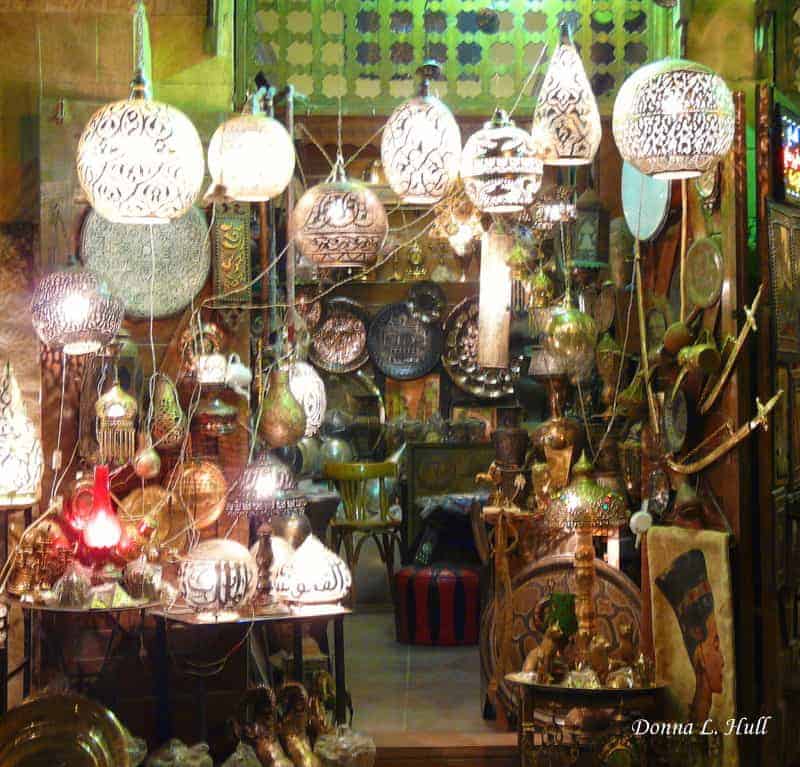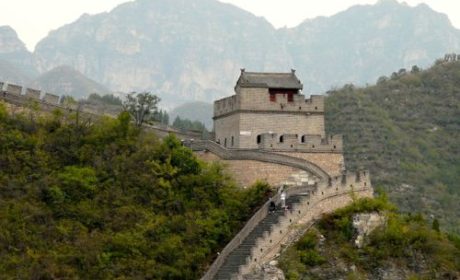I’m the type of boomer traveler who would rather be in the scene instead of looking at it. Take the Grand Canyon for instance; after an hour of gazing at its grandeur, the splendid panorama becomes too vast for my mind to comprehend. That’s why I prefer a 4-wheel-drive excursion in Canyon de Chelly or experiencing the Riverside Walk at Zion National Park. Yes, I know that I could hike down into the Grand Canyon, or go exploring on a Colorado River rafting trip, but that hasn’t happened yet.
So what does this have to do with visiting the pyramids in Egypt?
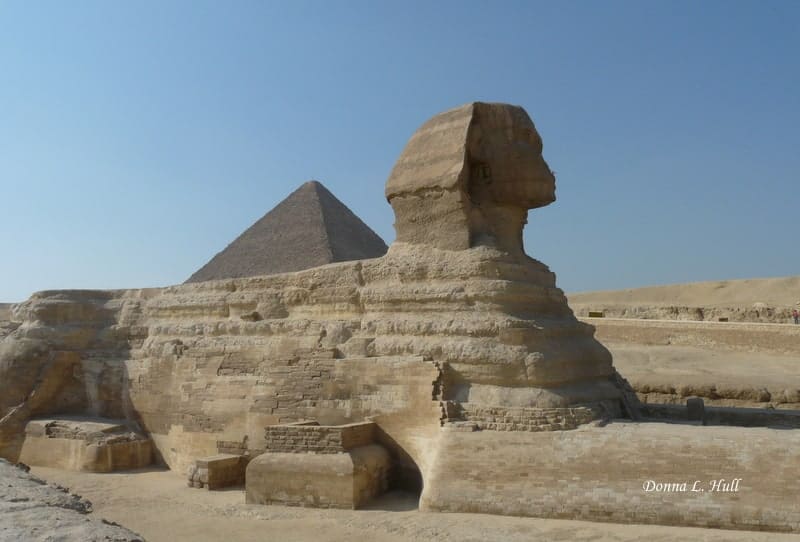
On a recent small group cultural tour to Cairo sponsored by AuthentiCity Travel, I discovered I’d rather be in one of the tombs at Saqqara (Sakkara) than staring at the Great Pyramid of Giza. Uh-oh, I’m sure that I just committed heresy in the eyes of ancient Egyptian enthusiasts.
Glamorous Giza
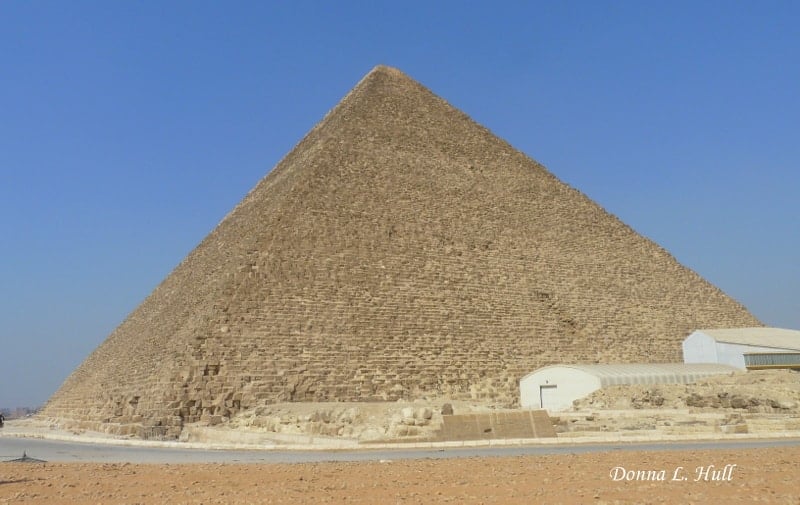
When I say, “I’m going to see the pyramids,” I bet your mind conjures up images of the Giza pyramids. What you know about them is probably from an elementary school social studies book, where a photo depicted three massive pyramids clustered in the desert guarded by the Sphinx — not a tourist in site.
For visitors on a brief stay in Egypt, possibly on a daylong excursion from a cruise ship or the resorts at Sharm El Sheikh, Giza is the pyramid site that you’re going to see. And well you should. The Great Pyramid is the oldest of the Seven Wonders of the Ancient World and part of a UNESCO World Heritage site that stretches from Giza to Dahshur.
But guess what? The pyramids of Giza no longer stand alone in the desert. The suburbs of Cairo have crept to the very base of the plateau on which they sit. On my afternoon visit, a smoggy haze made photography difficult. Persistent touts selling trinkets, camel rides or horse excursions were even more determined to sell their offerings due to the downturn in Egyptian tourism caused by the January 25, 2011 revolution. It was more like a carnival than a world antiquities site, albeit with less tourists than usual.
It’s possible to go inside one of the great pyramids. From reading other blog posts, I learned that it’s a hot, steep journey that’s not for the claustrophobic; and there’s nothing to see except a small stone formation where a tomb might have been, which is probably why our guides didn’t even mention going inside it.
Saqqara, the Older Sister

The moment our van turned onto the road that led to Sakkara, I felt as if I had traveled back in time. Soon, signs of the city melted into vegetable fields, homes guarded with iron gates, irrigation canals — sometimes piled with trash — and men wearing flowing robes guiding a donkey and cart or leading a herd of goats down the road.
The pyramids at Saqqara aren’t as impressive as the ones at Giza, but they are much older, dating all the way back to the First Dynasty. Some of them look more like large mounds of rocks plopped in the middle of the desert than the triangular stone structures that we think of as pyramids. And the Step Pyramid of Djoser is partially covered in scaffolding due to ongoing renovations.
The Imhotep Museum, opened in April 2006, sits at the entrance to the Saqqara complex. The modern building displays artifacts found at the site — the life’s work of French archaeologist, Jean-Phillipe Lauer, who spent 70 years in the Saqqara pyramid fields. On this visit, Jihan Hussein, Egyptologist, explained the items, putting history into context for the AuthentiCity group.
Perhaps it was our morning arrival, or more likely signs of the downward trend in tourism, but we practically had Imhotep Museum to ourselves. Later, we toured inside a tomb where carvings are still evident. In one room, row upon row of food items needed for the afterlife had been carved on the walls. A smear of original blue color remained, giving a slight hint of what a dazzling scene this must have been. Part of the sculpture had been torn from the wall leaving me to wonder why the tomb robber took that particular piece.

At another tomb, I descended a staircase, stooping over so as not to bump my head, until arriving in a burial chamber that housed a large, stone sarcophagus — empty of course. And the photo I took of the guard in front of the tomb? Yes, I had to pay him.
At the Step Pyramid complex, our group stood in the shade of a marble wall as Jihan explained the temple remains and future renovations. On the hill across the way, two camels rested as they waited to give tourists a ride. Later, after walking down a narrow path lined with columns on both sides, we exited the partially roofed funery building to a brilliant sun and touts selling jewelry.
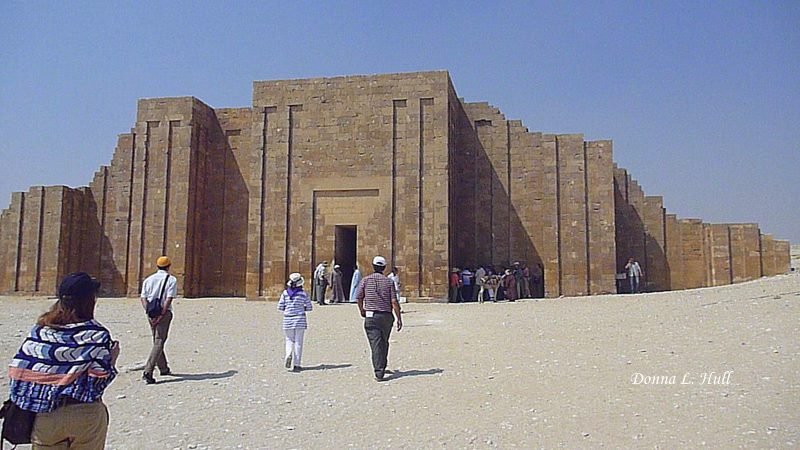
Much of Saqqara remains unexplored. What ancient artifacts are buried underneath the desert? The possibilities play with my imagination. I’d like to come back sometime to find out.
What was Egypt like during the mid-1800’s, when Europeans first discovered the ancient sites thanks to Napoleon? It changed lives according to this book review at A Traveler’s Library.
Boomer travel tips:
- Be ready to pull that wallet out if you to take a photo of a tout leading a camel or horse, they will ask for payment.
- This is the desert — wear a hat, plenty of sunscreen and bring bottled water.
- Touts are also present at Saqqara but not in as large a number as at the Giza pyramids.
- Visiting the pyramids with a guide enhances the experience.
There are over 130 pyramids in Egypt. Have you visited any of them? Join the conversation at the My Itchy Travel Feet page on Facebook or send us an email with your comments or questions.
AuthentiCity Travel provided this travel experience.

